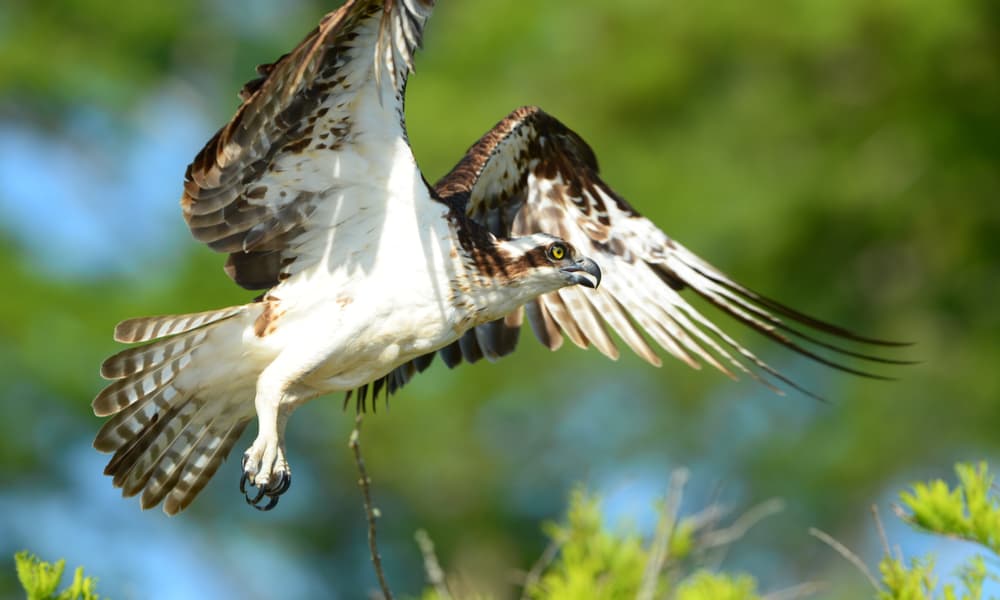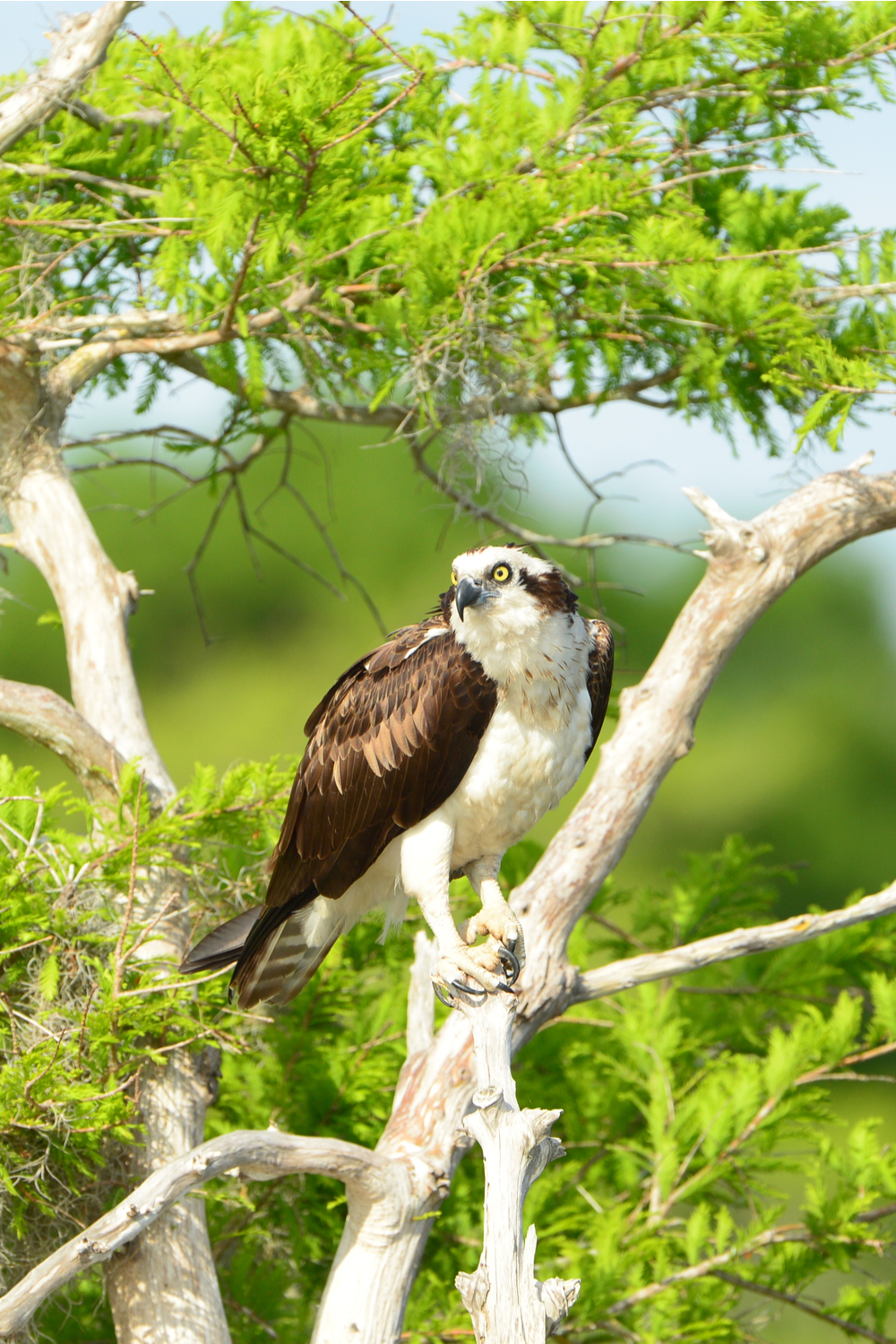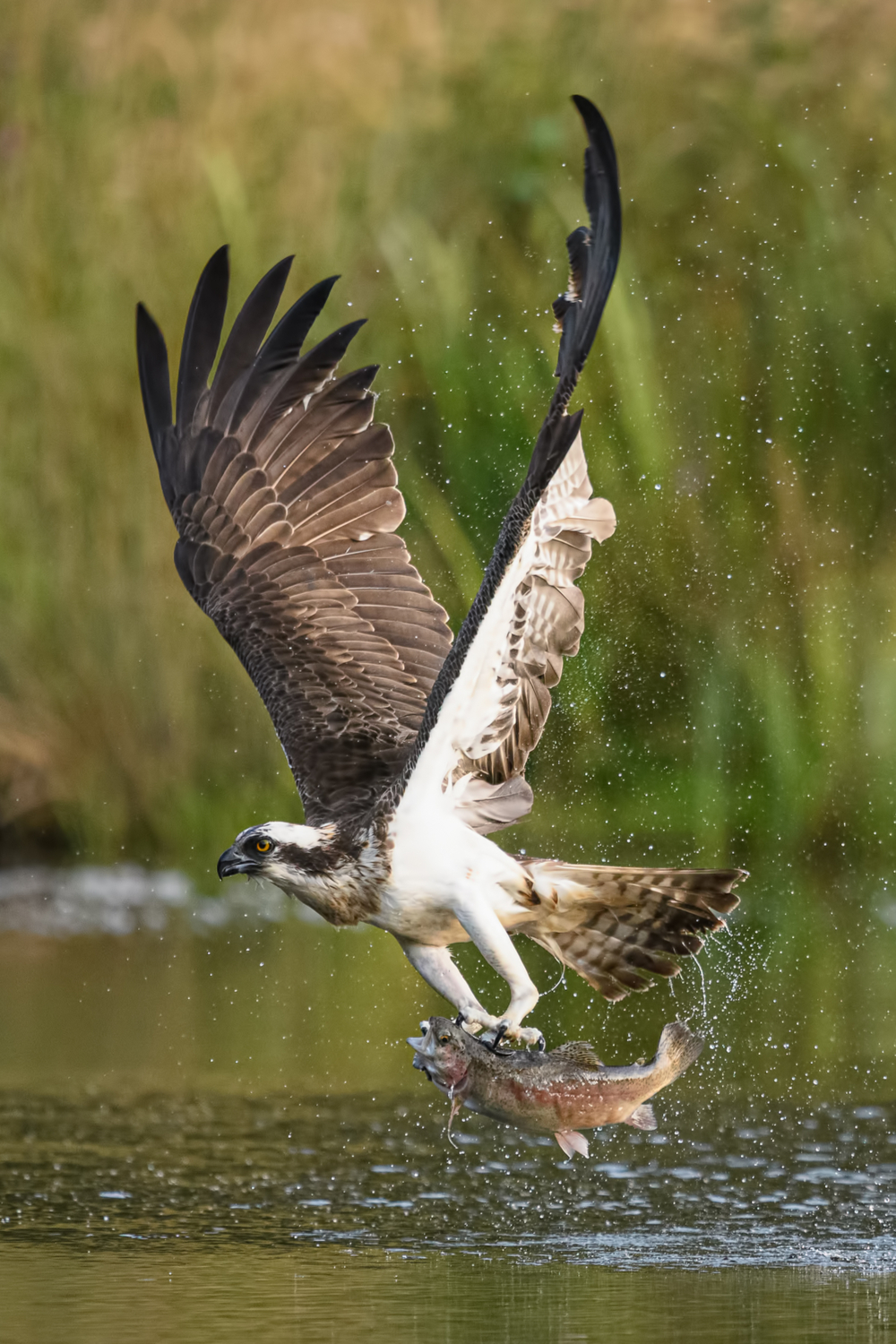People are often unsure as to what do osprey eat. Although they primarily focus on fish, there are so many other things in their diet. You can find these birds in almost any corner of the world. They usually occupy locations near water, as this gives them easy access to their prey.
Osprey Habits and biology
Osprey has numerous physical traits that allow them to catch prey in the way. According to them, the animal received its genus and family called Pandium and Pandionidae. We differentiate three species of ospreys.
This is the second most common raptor animal only after the peregrine falcon. It mainly lives in regions with a tropical or temperate climate. You can find North American ospreys in various regions, from Alaska in the north to Florida in the south. During winter, they will fly to South America, to countries such as Argentina.
Even if you know very little about birds, you can easily recognize ospreys. They are one of the larger bird species with unique physical characteristics. In a sense, they resemble hawks. Although they are rather large, their bodies are slender, with long legs and wings.
Another specific thing for this species is their shape when flying: it looks like the letter M when you look at them from the ground. Bird is much whiter than other animals from this category. Their wings are also white, for the most part, with noticeable dark patches around their wrists.
Here are some of their main habits:
- Ospreys can dive with their feet first when catching aquatic prey. They will get completely soaked but can still fly with fish in claws.
- After getting wet, ospreys will shake the water from their feathers in a similar way dogs do.
- When diving, the bird will close its nostrils so that they don’t inhale water.
- Although great in water, they don’t have the same maneuverability as other birds of prey. As a result, they usually stick to open areas where they can fly without having to think about fast direction switching.
- These are very solitary birds. Often, they will roost alone. However, some of them will spend winters in flocks of six to ten animals.
- Unlike many other species, the animal will only protect the immediate vicinity of its nest. They won’t guard their territory but, they are very aggressive towards anyone approaching their nest.
What do ospreys eat in the wild?
Unlike other hawks, ospreys are the only species on the North American continent that eats only live fish. The bird mostly focuses on the fish, and it makes for 99 percent of its diet. Ospreys eat more than 80 different types of fish.
The animal can eat anything from six to thirteen inches long and is less than a pound in weight. According to tracking data, one osprey managed to catch a fish weighing 2.5 pounds. However, we are certain there were cases in nature where ospreys hunted even larger prey.
Although they mainly focus on aquatic species, they are no strangers to other animals as well. On rare occasions, they might even eat carcasses. The animal rarely needs water as they get it from their prey. Still, there are situations where ospreys will go down to a drinking hole during hot summer days.
Here is the list of animals that ospreys eat:
- Various types of fish
- Other birds
- Frogs S
- Snakes
- Reptiles
- Small mammals
- Crustaceans
- Invertebrates
Like some other bird species, ospreys require a hefty dose of proteins. This is the main energy source they use during their life. They also need iron and calcium. Iron is very important for their metabolic functions, while calcium is crucial for their bones. Besides these nutrients, they will take other minerals and vitamins.
When looking for prey, the bird will fly very slow and low over a body of water. If they notice something interesting, they will stop at that spot and start hovering. By relying on their superior eyesight, they can easily distinguish between various species in the water.
If the animal doesn’t spot any prey, it might resort to cunning. They will start flying just above the water surface, dragging their claws along the surface. By doing so, they will scare fish that, in panic, might jump out of the water.
20 Facts about ospreys
Although not as interesting as some other bird species, there are various cool things about ospreys. Here are some fun facts about this aquatic animal.
- Ospreys are very evolved compared to other aquatic birds. While other species can only pluck the prey from the surface, this animal can completely submerge its body.
- This species has a third eyelid that we refer to as a nictitating membrane. It is a semi-transparent membrane that the bird uses when diving. When in water, this eyelid will serve as goggles providing a better vision.
- Once the animal catches its prey, it will carry it headfirst through the air. This makes it easier to fly with fish in claws.
- These animals have been around for at least 11 million years. Over time, they have developed numerous characteristics that allow them to fish with amazing precision. In fact, this is the main thing setting them apart from other raptor birds.
- The animal places its outer toe backward, so they have a better grasp of fish and other aquatic species.
- These animals usually live for about 15 to 20 years. In some rare cases, they can reach 25 years of age. Considering this longevity and the fact they fly long distances, it isn’t surprising that an average osprey will fly more than 160,000 miles during its life. According to some biologists who tracked their migrations between Africa and Sweden, it was discovered that an average osprey travels about 4,200 miles during a 45-day migration period.
- They have various signals and ways of communicating. Experts describe eight unique vocalization patterns that allow these birds to express excitement, concern, and other emotions. They also utilize 11 physical signs when courting, resting, protecting, and during combat.
- Similar to other birds, ospreys have magnificent courting rituals. They can perform aerial acrobatics we refer to as “sky dance.” Among others, during the dace, the male will bring nest material and food for his partner. They might also wobble while flying, hover, and scream to attract a potential partner.
- In most cases, members of this species are monogamous. They will choose a partner for life and stick to them until death.
- Although they start creating nests early, the process of nest creating continues over the years. They will add more stuff to it every once in a while, and some of the nests can grow as big as 10 feet tall. Ospreys place their nests on high ground such as poles and trees.
- Male starts its courtship by bringing food to its potential partner. The ritual continues until their chicks are ready to leave the nest.
- Although they travel a lot, the animal always comes back to the same place every year. In many cases, the couples will return to the nests they’ve previously built. Males usually come before females as a way of securing the area. When they get back to their previous nest, the couple will spend some time repairing it and adding more material.
- The female will lay two to four eggs. These eggs are with brown blotches. Once the chicks hatch, which happens after five weeks or so, they will be fed by both parents. It takes about six to eight weeks for young birds to fledge.
- Eagles and owls are osprey’s natural enemies. They are especially vulnerable when flying because they’re not as maneuverable as some other predatorial species. Besides attacking their nests, these birds will also hunt adults in mid-air.
- Snakes, raccoons, and other animals that are good at climbing can also pose a threat. They can easily reach birds’ eggs and young.
- The genus name Pandion comes from Greek history. It refers to Athenian King Pandion the Second, who was the grandfather of hero Theseus.
- We are not certain how we got the name “osprey.” The word was first mentioned around the 1460s. Language experts believe that this comes from the Anglo-French term “ospriet.”
- Ancient Roman biologist Pliny the Elder wrote that these birds force their chicks to fly towards the sun. If they fail the test, they will get killed by their parents.
- Ospreys have a special place in the Buddhist religion. They consider the animal the “King of Birds.” You can find this teaching in The Jataka. This book contains stories from Buddha’s previous births.
- According to medieval people, ospreys had such enormous power over fish that they could force them to surrender and turn belly up in the water.
Conclusion
Most people recognize ospreys as amazing diving birds. Their aquatic prowess is second to none, and only a handful of species are as proficient in hunting fish from the air.
The bird mates for life and is very loyal to its partner. Males perform unique sky dances during courtship. Both sexes take care of the young ones.
These animals tend to fly long distances. They will migrate south during winter and can fly thousands of miles every year.


